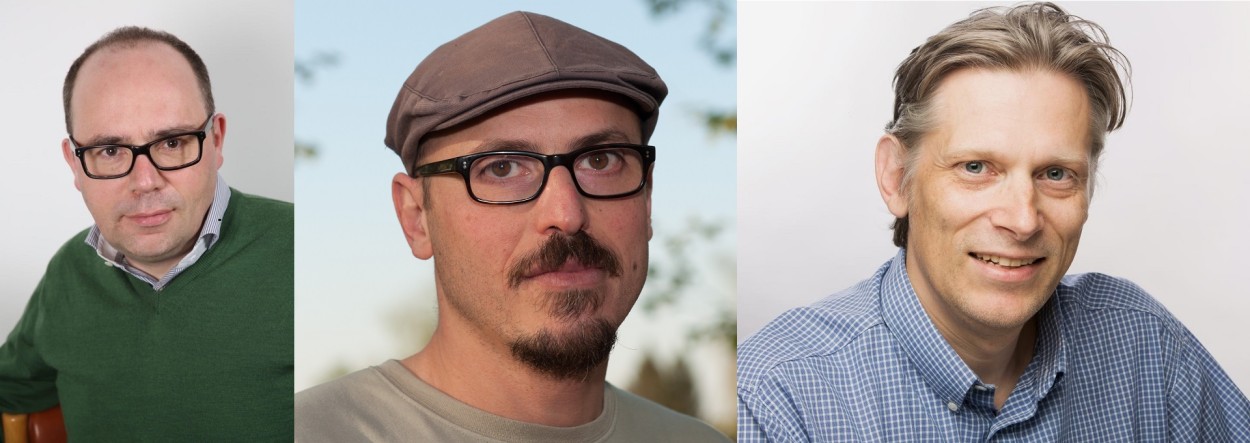Three École Polytechnique researchers win ERC Advanced Grants
 De gauche à droite : Olivier Gossner, Charles Baroud et Joris van der Hoeven
De gauche à droite : Olivier Gossner, Charles Baroud et Joris van der Hoeven
Every year, the European Research Council supports ground-breaking research and scientific excellence. In 2024, Charles Baroud, from École Polytechnique’s Hydrodynamics Laboratory (LadHyX), Olivier Gossner, from the Centre for Research in Economics and Statistics (CREST) and Joris van der Hoeven from École Polytechnique’sComputer Laboratory each receive an ERC fellowship in the Advanced Grants category
Melcart - Engineering soft microdevices for the mechanical characterization and stimulation of microtissues
As they develop and interact with their environment, living beings subject their tissues to mechanical stresses of varying duration. These have a major impact at many stages of life (early embryonic development, regulation and stabilization of adult tissues, disease progression). Mechanobiology studies these phenomena and has already highlighted numerous mechanosensitive circuits within the cell. But what about the response of tissues made up of several cell types and organized in complex 3D structures to these constraints? The Melcart project, led by Charles Baroud, professor at École Polytechnique’s Hydrodynamics Laboratory (LadHyX*), applies mechanobiology to in vitro models reproducing these structures (spheroids, organoids). To this end, the researcher is developing innovative microdevices integrating concepts from the science of architected materials - composite materials with singular mechanical properties - and soft robotics - in which robots have a flexible structure - in order to generate mechanical forcing on a cellular scale. The devices developed are then coupled with a unique method for measuring and characterizing cells (multiscale cytometry) and with the physics of soft matter. This interdisciplinary work opens up a new field of study and understanding of the phenomena at play in certain diseases or in stem cell differentiation. They will contribute to the development of new cell characterization strategies and potentially to the identification of mechanosensitive pathways for treating cancerous tumors.
*LadHyX: a joint research unit CNRS, École Polytechnique - Institut Polytechnique de Paris
SInfoNiA - Strategic Information: New Directions and Applications
Financial crises, currency attacks, social stability... our world's economic activity is particularly sensitive to information and the way it circulates. Led by Olivier Gossner, Director of Research at the Centre for Research in Economics and Statistics (CREST*), the SInfoNiA project draws on the study of decision-making systems between several players (game theory) to analyze how the dissemination of information impacts collective choices. To this end, the project uses an original interactive information model adapted to game theory, in which beliefs, opinions, news, etc. (which constitute information) are represented by a combination of probabilistic and algorithmic mathematical tools. The aim of these tools is to create a relevant scientific language that can be used by as many people as possible. They will translate the weight of beliefs, by definition immaterial, on very real decisions. Thanks to its engineering component and this methodology, SInfoNiA will also study the impact of information circulation within various organizations. This will involve analyzing new models of financial stability, but also looking at the consequences of certain data on the robustness of social equilibria (to what extent can fake news destabilize society?). Finally, we'll be looking at how information and individual beliefs can change social norms (in terms of gender equality, for example).
*CREST: a joint research unit CNRS, École Polytechnique – Institut Polytechnique de Paris, GENES, ENSAE Paris - Institut Polytechnique de Paris
ODELIX - Solving differential equations fast, precisely, and reliably
Differential equations, i.e. equations whose unknowns are functions and in which the derivatives of these functions are involved, are an essential area of research in mathematics. Their usefulness extends to many other fields. They can be used to model, among other things, the movement of planets, the spread of epidemics, or the evolution of a chemical reaction. There are various approaches to solve them, either in a symbolic (exact) way (but these solutions don't always exist or can be difficult to calculate), or in an approximate way using numerical methods. The aim of the ODELIX project led by Joris van der Hoeven at LIX is to improve our understanding and resolution of these equations. In terms of numerical methods, the project will focus on difficult cases that are currently hard to solve fast and with guaranteed precision. In terms of symbolic methods, the project aims to reduce the problem's complexity using techniques drawn from computer algebra. Finally, tools such as code libraries will be developed to enable the practical use of these methods.
*LIX: a joint research unit CNRS, École Polytechnique - Institut Polytechnique de Paris
 Support l'X
Support l'X